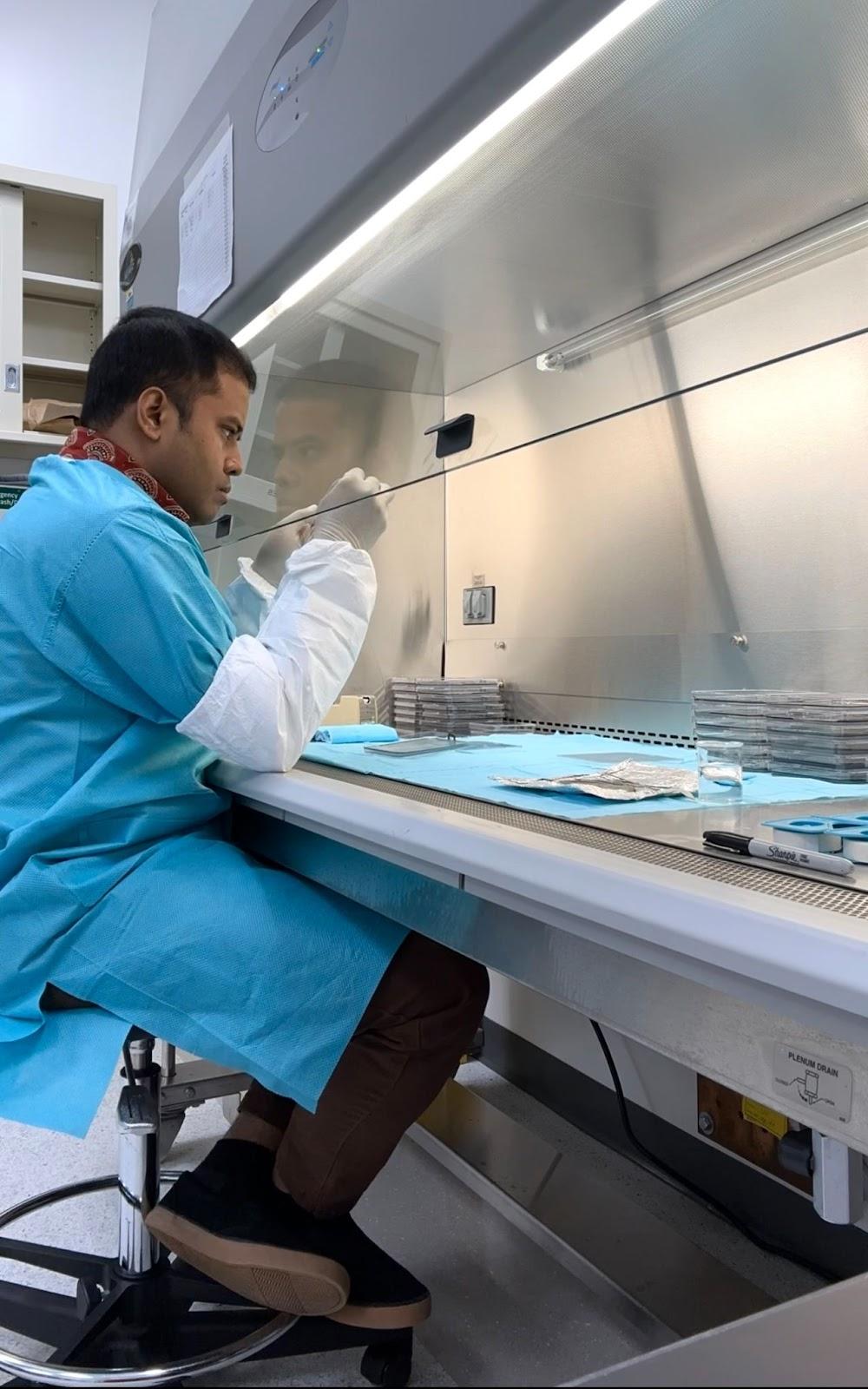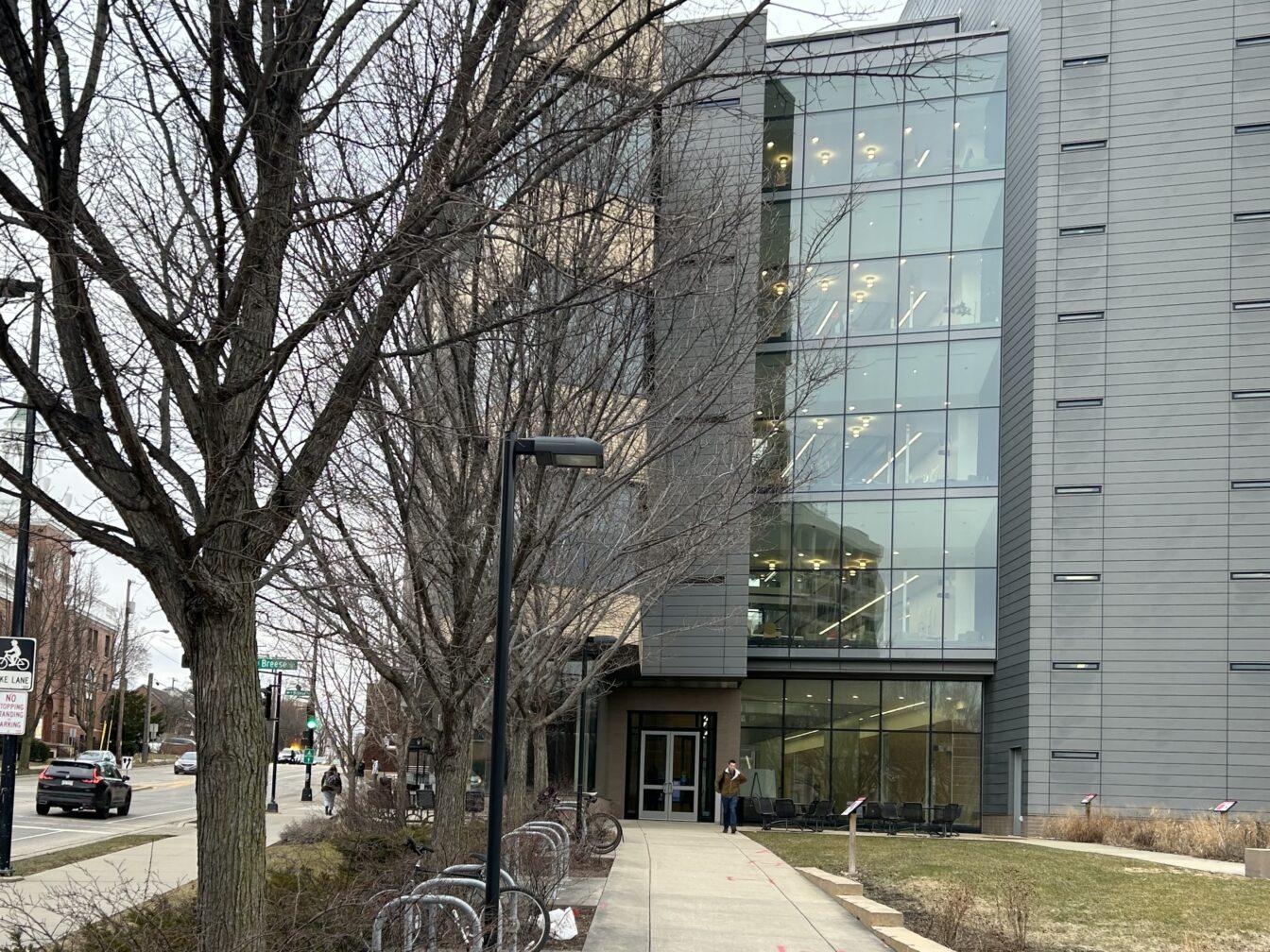The Trichoderma Associated Space Tomato Inoculation Experiment is a study where researchers are investigating tomato plant growth patterns in a microgravity environment, project co-investigator and University of Wisconsin-Madison researcher Sarah Swanson said.
Completed at the Gilroy Life Science Lab in collaboration with NASA, the project specifically looks into plant growth within the orbit of Earth’s atmosphere.
Project TASTIE is also known as APEX-10 through NASA. Principal investigator of Gilroy Labs Simon Gilroy and co-investigators Arkadipta Bakshi and Swanson are researching the effect of the microbe Trichoderma harzianum on increasing stress resilience and improving seedling growth of tomato plants under the influence of microgravity.
“We set our experiment up about two days ahead of time,” Gilroy said. “We handed our experiment samples and procedures over to the NASA launch team for the project’s preparation.”
Bakshi and Swanson said they watched their samples — nestled inside the SpaceX Falcon 9 CRS NG-20 — launch into space Jan. 30 from the Kennedy Space Center in Florida.
Experimental samples and controls are monitored in altered environmental gravity conditions on the International Space Station for two weeks after arrival, Bakshi said.
One hundred fifty petri dishes of different experimental design groups were prepped for the experiment, Bakshi and Swanson said. The array of experiment samples the Gilroy team prepared included tomato seeds and fungus — some samples with only tomato seeds or fungus and some with both.
In preparation for launch, the samples were held at four degrees Celsius inside the rocket so initial growth of the samples was stagnant before arrival to the ISS, Gilroy and Swanson said. After two weeks of growing, the tomato samples will be frozen and shipped back to the KSC and to the Gilroy lab, Bakshi and Swanson said.
Swanson said their team receives pictures every other day while the samples grow in the ISS. Bakshi and Swanson monitor control samples of their own back in the team’s lab as the NASA team at KSC monitors another group of control samples too, Bakshi said.
“Our TASTIE experiment samples are growing in a chamber with red and blue lights in the VEGGIE,” Swanson said.
The VEGGIE growth system is in a growth chamber aboard the ISS, with duplicate versions housing control plants in both the KSC lab and at UW, Swanson said.
Wisconsin’s freshwater ecosystems face change due to shorter, unpredictable winters, expert says
Gilroy said TASTIE and other space agriculture research is uniquely challenging because the launch into space is not repeatable, so the Gilroy team did numerous rounds of testing at KSC to ensure their project was carefully crafted.
“We wrote out the procedures, and the astronauts on the international space station have an iPad to conduct and document the procedural experiment,” Gilroy said.
Bakshi and Swanson said the preliminary testing for TASTIE began in 2019 when the Gilroy team was in Florida at the KSC and eventually obtained NASA’s research-funded approval after submitting a project proposal.
The Gilroy team’s previous research and publications paved the way for TASTIE to become a reality. The researchers focus on various aspects of plant biology, including how plants sense and respond to abiotic stresses, gravity and touch stimuli and how they regulate growth, Bakshi and Swanson said.
“We understand this project is based on our previous spaceflight missions because we have understood so much [more] about plant biology and the Space Station,” Bakshi said. “This project is taking one step higher for us to comprehend the role of plant-microbe interaction in the space station microgravity.”
Before TASTIE, the Gilroy team collaborated with NASA in their Targeting Improved Cotton through Orbital Cultivation study, Bakshi said. Three years ago, TIC-TOC launched cotton samples to the ISS on SpaceX Dragon CRS-22 to monitor the growth of cotton roots in a microgravity environment, Bakshi said.
According to ISS National Library, the Gilroy lab team observed great success from TIC-TOC’s experiment. The Gilroy team found cotton root samples grew better in space on the ISS than the control samples on Earth, Bakshi said.
“We are doing a lot of hard work for our generation and for future generations,” Bakshi said. “Gravity plays a very important role in the growth and development of plants and to grow plants effectively on earth, we need to dissect the gravity factor better.”
TEDxUWMadison introduces new AI ideas with talks from five experts
Expending time and material resources for research projects like TASTIE to study the imbalance of the space environment is important for two main reasons, Bakshi said.
Humans are explorers — our innovative shift to agriculture serves as a catalyst for the livelihood for the population, Bakshi said. Studying space biology and the factor of gravity will not only assist in sustainable agriculture in space, but will help us understand plant growth everywhere.
“By receiving the data from experiments in microgravity environments, we get supplemental information to engineer plants to be more effective and resilient in different stressful conditions on Earth,” Bakshi said.
















